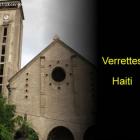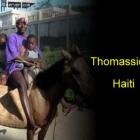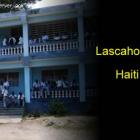ADVERTISEMENT
City
Town of Grand-Boucan in Haiti
Grand-Boucan is a cityship within the Baradères Arrondissement, part of Nippes Department. A coastal town, located on the northwestern part of Haiti's peninsula, it gazes out at the jewel-toned Caribbean Sea. The nearest large cities are Les Cayes and Port-au-Prince. Grand-Boucan, a town based on tradition, contains a largely Catholic community. Other practicing faiths are Protestant and Voodoo.
The sparkling Caribbean Sea can be seen from the center of town, and the sight of fishermen carrying their nets to the beaches lets tourists know this agricultural activity puts food on the table for many poor Haitian families living there. The sight of the city from a sea vessel, bobbing off the coast, inspires awe with its breath-taking mountain peaks set against a Caribbean blue sky, unlike no other in the world.
President Martelly Compassionate Visit to Anse-A-Veau
On Thursday, 26th July, 2012, the village of Anse-a-Veau in Haiti was privileged to be visited by the head of state. President Mitchel Martelly went to visit the victims of January 12, 2010 earthquake. The village has sixty households whose members are the survivors of the earthquake and the floods that came after the quake. Anse-a-Veau is funded under the support of "food for the Poor" program as well as the Catholic Church in the diocese of Anse-a-Veau and Miragoane. These two groups have done great work including building a school in that area to benefit the residents.
Cap-Haitian, A Fine Vacation Destination In Haiti
Cap-Haitian also known formerly as le Cap, Cap-Henri and Cap-Francais is located on Haiti's northern coast. It is the capital of the Department of Nord and is located near Milot, a historic town. It has around 190,000 inhabitants with indigenous migrants from South and Central America. During the colonial rule it was an important city where it served as the capital of the French Colony of Saint Dominigue from 1711 to 1770.
Anti Government And Revolutionary Movements
The capital was moved to Port-au-Prince. Initially, under the rule of King Henri Christophe, it was Kingdom of Northern Haiti's first capital. Infrastructure for transportation was not very good during that time. The city was destroyed by the 7th May 1842 earthquake.
Moron, a Small and Beautiful Town in Haiti
Moron is a beautiful town located in Haiti, in the Grande-Anse region. In Haiti, it is a small community. The population of the region is estimated to be around 1830 as per the census. It is located at a latitude 18° 35' 04" North and longitude of 74° 13' 27" West and towards the eastern side of Bonbon.
Alternate Names for Moron
Moron is located at a distance of 175 km from the Haitian capital, Port-au-Prince. It is situated at an average elevation of around 60 meters. For Moron the time zone is America/Port-au-Prince.
Though better known as Moron, it has alternate names like Ville de Moron and Bourg de Moron in Haiti. A number of non-profit organization and social groups sponsor orphanages for girls in Moron.
Town of Beaumont in Haiti to produce yams, bananas and cassava
The town of Beaumont is located in Corail Arrondissement in Haiti's Grand'Anse department, deep in Haiti's Southern mountains. Haiti's President Michel Martelly went on a visit to Beaumont to look at how people live and how their living conditions can be improved. President Martelly plans to put more industries and population in the rural area so as to develop it. He believes that agriculture will improve Haiti. He thus thought of introducing production of yams, bananas and cassavas.
Production of yams, bananas and cassavas will greatly develop Beaumont in terms of creating jobs opportunities and also will improve Beaumont's economy. If the people of Beaumont agree to move from the urban areas and settle in the rural area where they will engage in farming, Beaumont will greatly develop and their living conditions will improve. Poverty is one of the greatest challenges facing Haiti and since there is enough land but people lack ideas on how to use it, President Michel thought of giving them the idea. The president was ready to support that farming if the people of Haiti were willing to develop.
Michel Martelly and Bishop Pierre-Andre Dumas in Anse-a-Veau
In July, Haitian President Martelly, along with Bishop Pierre-Andre Dumas and Food for the Poor Representative Daniel Rouzier, visited a village located in Nippes Department's Anse-à-Veau that was built for the displaced victims of the 2010 earthquake and the various floods in the department. It was a project done by the NGO Food for the Poor where about sixty homes were built. The trio also launched the town's new Sainte Anne Polytechnic School during their visit.
The Martelly administration has been launching several projects for the development of Haiti's economy and for the welfare of all Haitians, especially the victims of the devastating 2010 earthquake. It has also urged for the decentralization of the government's power and resources to local governments and smaller public sectors in order to extend its public service to the smallest of communes and villages.
Saut-d'Eau, The Pilgrimage Site
If there is one thing that the Haitian town of Saut-d'Eau in the Centre Department is known for, it is its holiness. Every year, thousands of Haitians go on a pilgrimage in the town to pray and ask for miracles to its patron saint, Lady of Mount Carmel. Saut-d'Eau, whose name means a "happy village," boasts of a couple of historical and mystical heritage sites.
One of them is the town's breathtaking waterfall, where the name Saut-d'Eau was actually derived from. The waterfall becomes a hot spot during the annual pilgrimage, as people go to the site and jump into the waters as part of their ritual. Believers from both Catholic and Voodoo religions strip down their clothes and bathe in the waterfall, which is said to have healing powers.
The Town of Paillant, Haiti
In the southern part of Haiti sits Paillant (known as Payan in Créole), a tiny village with an estimated population of 16,000 inhabitants. Part of the Miragoâne Arrondissement, which is part of Nippes Department, the metropolitan heart of the village lies hidden behind mountain ranges on the Tiburon peninsula. Like Miragoâne, it lies below Ile Gonave and an inlet of the Caribbean Sea. Paillant was carved out of the southwestern area of Miragoâne City. Two communes comprise Paillant: Bezin and Salagnac.
As in other parts of the Miragoâne Arrondissement, specifically Fonds-des-Nègres, roads are nearly impossible to travel on. Few paved roads exist, the majority of them dirt and rock-embedded conduits of vehicular traffic. Travelers complain constantly of tires wearing out quickly.
Grande-Riviere-Du-Nord, A Location In Haiti
Grande-Rivière-du-Nord is located in Haiti's Nord Department. In the Grande-Rivière-du-Nord Arrondissement it is a municipality. It is located to the north of Port-au-Prince, the capital of Haiti at a distance of 120 kilometers. It is situated at an elevation of 92 meters above the level of the sea.
The Fast Flowing La Grande Riviere Du Nord River
On the Cormiers plantation in 1758, Jean-Jackques Dessalines was born here. In the geographical coordinates, latitude 72° 11' 0" West of the Greenwich meridian and latitude 19° 35' 0" North of the equator, is located La Grande Riviere du Nord a river in Haiti. It flows relatively fast.
Petit-Trou-de-Nippes Natural Beauty a Drawing Card for Tourists
A slice of paradise inhabits the northwestern section of Haiti's peninsula, the town of Petit-Trou-de-Nippes. Situated within the Anse-à-Veau Arrondissement, it is a commune of the Nippes Department. The other communes are Arnaud, Plaisance-du-Sud, Anse-à-Veau, and L'Asile.
Resting on the coast of the azure Caribbean Sea, its waters are home to frolicking dolphins, a pleasing and thrilling sight to visiting tourists, as well as stunning sunrises and sunsets. The town of
Petit-Trou-de-Nippes is a perfect vacation spot for those who like walking in natural environments, enjoying quietude and serenity.
But to arrive at the magnificent splendor of Petit-Trou-de-Nippes from Port-au-Prince, a journey of up to five hours is necessary. Dirt roads--the bane of many small towns in Haiti--plus bodies of water are strewn along the way, challenging travelers. Yet the indescribable beauty that awaits at the end compensates. Sand as white and fine as sugar, and crystalline waters refresh one's senses.
Our objective is to share with you news and information about Haiti and the people of Haiti. Traditions, habits and the way we were or grew are alive in this site. We highly recommend that you Subscribe to our Newsletter and also share with us some of the things that are memorable and made us unique people.

 Verrettes, Haiti
Verrettes, Haiti  Haiti tech Summit
Haiti tech Summit  Haitians are a Proud People
Haitians are a Proud People  Thomassique, Haiti
Thomassique, Haiti  Lascahobas, Haiti
Lascahobas, Haiti